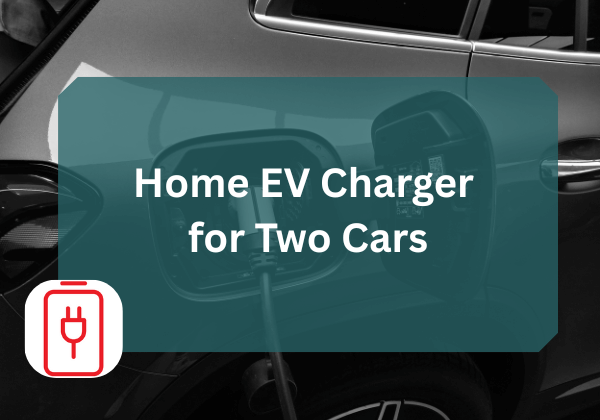Having the ability to charge two vehicles simultaneously at home offers unmatched convenience, cost savings, and environmental benefits.
In this post, we’ll explore everything you need to know about setting up a dual EV charger at home, from charger types and key features to installation advice and practical tips.
Home EV Charger for Two Cars
1. Grizzl-E Duo EV Charger
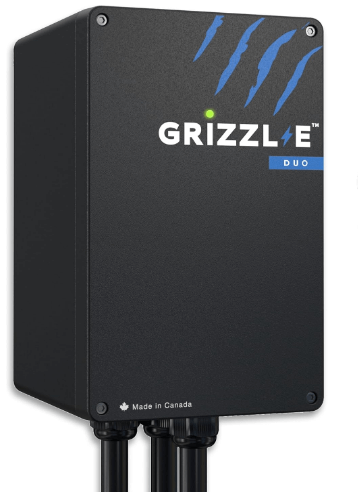
Key Features:
- Dual Charging Ports: Charge two EVs simultaneously.
- Adjustable Amperage: Settings at 16A, 24A, 32A, or 40A.
- Robust Build: NEMA 4-rated, suitable for outdoor installations.
- Smart Power Sharing: Balances the load between two vehicles efficiently.
Why It’s Great: The Grizzl-E Duo is designed specifically for households with multiple EVs, offering simultaneous charging without compromising on speed or safety.
2. ChargePoint Home Flex
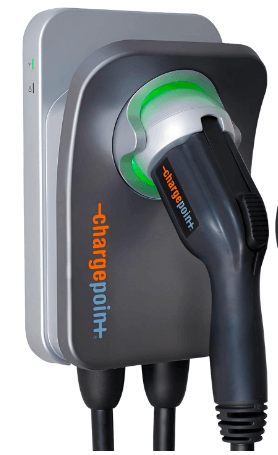
Key Features:
- Adjustable Output: 16A to 50A, catering to various EV models.
- Wi-Fi Enabled: Monitor and schedule charging via the ChargePoint app.
- Flexible Installation: Options for plug-in or hardwired setups.
- Smart Home Integration: Compatible with Alexa and Google Assistant.
Why It’s Great: While it’s a single-port charger, installing two units allows for independent control and scheduling for each vehicle, making it a versatile choice for dual-EV households.
3. JuiceBox 40 Smart EV Charging Station
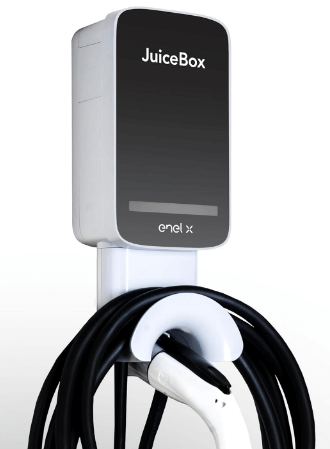
Key Features:
- Power Output: Up to 40A for rapid charging.
- Smart Features: Wi-Fi connectivity, app control, and voice assistant compatibility.
- Energy Management: Schedule charging during off-peak hours to save on electricity costs.
- Durable Design: Weatherproof casing suitable for outdoor use.
Why It’s Great: Installing two JuiceBox units provides a smart and efficient solution for charging two EVs, with the added benefit of advanced energy management features.
4. Wallbox Pulsar Plus 48A

Key Features:
- High Power: Delivers up to 48A, suitable for fast charging.
- Compact Design: Sleek and small footprint, ideal for tight spaces.
- Smart Connectivity: Wi-Fi and Bluetooth enabled, with app control.
- Power Sharing: Allows multiple units to share power efficiently.
Why It’s Great: The Wallbox Pulsar Plus supports power sharing between multiple units, making it an excellent choice for homes with two EVs and limited electrical capacity.
5. Emporia Smart Home EV Charger
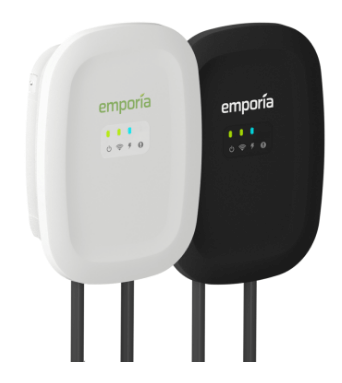
Key Features:
- Affordable: Budget-friendly without compromising on features.
- High Output: Up to 48A for fast charging.
- Smart Features: Wi-Fi connectivity, app control, and energy monitoring.
- Solar Integration: Can be paired with solar systems for sustainable charging.
Why It’s Great: The Emporia charger offers advanced features at an accessible price point, and installing two units can provide a comprehensive solution for dual-EV households.
Why You Need a Home EV Charger for Two Cars
Owning two EVs in a single household makes a dual charging setup not just a luxury but a necessity. Here’s why:
- Time Efficiency: Charging two vehicles overnight ensures both are ready for use each morning.
- Energy Management: Modern dual chargers balance power to prevent overloading your home’s electrical system.
- Cost Savings: Charging at home is significantly cheaper than public charging stations.
- Convenience: No more rotating cars or competing for charger time.
Types of Dual EV Charging Solutions
When it comes to charging two EVs at home, there are primarily two types of setups:
1. Dual-Port EV Chargers
These are specially designed units with two charging cables. They can either:
- Charge both vehicles simultaneously at reduced power, or
- Alternate full charging power between each vehicle.
Some premium models offer load balancing to manage electricity distribution efficiently.
2. Two Single-Port Chargers
This involves installing two separate chargers, each with its own port. This setup:
- Requires more space and potentially more electrical upgrades.
- Offers faster individual charging when used on a dedicated circuit.
- Allows separate scheduling and control for each car.
Top Features to Look for in a Dual EV Charger
To ensure your investment in a home EV charger for two cars is future-proof, look for these features:
1. Load Sharing Technology
Smart chargers with dynamic load balancing automatically divide available power between both vehicles, optimizing energy usage without tripping your circuit breaker.
2. Wi-Fi or App Connectivity
Charger apps allow you to:
- Monitor charging sessions in real time
- Schedule charging for off-peak hours
- Track energy consumption and costs
3. Weatherproof Design
Since most chargers are installed in garages or on driveways, ensure the unit is rated for outdoor use (NEMA 4 or better).
4. High Power Output (Up to 50 Amps)
More amperage equals faster charging. A 50-amp charger can add up to 37 miles of range per hour, depending on your EV model.
5. Compatibility with All EV Models
Look for universal connectors (like the J1772 plug) or dual connectors if you own a Tesla and another EV brand.
Installation Tips for a Home EV Charger for Two Cars
1. Evaluate Electrical Capacity
Before anything, consult a licensed electrician to assess if your main panel can handle the additional load. If not, you might need:
- A service panel upgrade
- Load management systems
- Sub-panel installation for the garage
2. Strategic Placement
Install the charger:
- Centrally between both parking spots
- With cable length in mind (typically 18–25 feet)
- Near your electrical panel to reduce wiring costs
3. Permits and Local Codes
Most cities require a permit for Level 2 charger installations. Check with your local authority and always hire certified professionals.
Energy Efficiency and Sustainability
Charging both EVs at home also contributes to a greener lifestyle. Most utilities now offer:
- Time-of-use (TOU) rates: Save money by charging during off-peak hours.
- Solar integration: Combine your charger with solar panels to charge your EVs with 100% clean energy.
Some smart chargers can even sync with your solar system to prioritize renewable energy during peak generation hours.
Smart Scheduling for Two Cars
Managing two EVs doesn’t have to be complicated. Many dual chargers allow users to set custom charging schedules. For example:
- Car A charges from 10 PM to 2 AM.
- Car B charges from 2 AM to 6 AM.
This ensures both vehicles get charged using cheaper, off-peak energy while keeping your home’s electrical system safe.
Final Thoughts
A home EV charger for two cars is more than just a convenience, it’s a critical infrastructure upgrade for the modern electric household. By choosing the right charger and installation setup, you’ll save money, charge efficiently, and support a more sustainable future.

